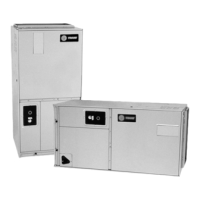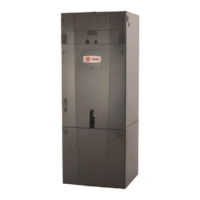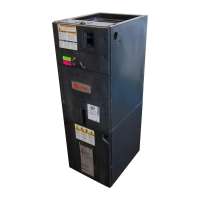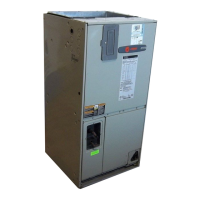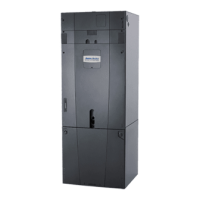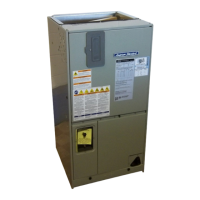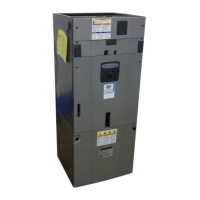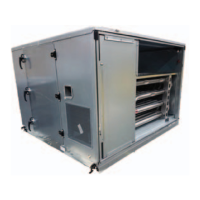Installation
36 RT-SVX35H-EN
Connecting the Gas Supply Line to the
Furnace Gas Train
Follow the steps below to complete the installation
between the supply gas line and the furnace. Refer to
Figure 17 - Figure 19 for the appropriate gas train
configuration.
1. Connect the supply gas piping using a "ground-joint"
type union to the furnace gas train and check for leaks.
2. Adjust the inlet supply pressure to the recommended
7"
to 14" w.c. parameter for natural gas.
3. Ensure that the piping is adequately supported to
avoid gas train stress.
Table 7. Modulating gas heat settings
Natural Gas
Heater Size (MBH) Gas Orifice
Full Modulation Partial Modulation Valve Actuator
Air Damper
Actuator Voltage
Range (VDC)
Air Damper
Actuator Voltage
Range (VDC)
Left (Coarse)
Setting
Right (Fine)
Setting
500 #21 7 - 10 7 - 9.7 2.3 -1
850 #H 6 - 10 6 - 8.7 1.3 -1
1000 #N 5 - 10 5 - 8.7 0.9 0
LP
Heater Size (MBH) Gas Orifice
Full Modulation Partial Modulation Valve Actuator
Air Damper
Actuator Voltage
Range (VDC)
Air Damper
Actuator Voltage
Range (VDC)
Left (Coarse)
Setting
Right (Fine)
Setting
500 #34 / #53 7 - 10 7 - 9.7 6 1
850 #32 6 - 10 6 - 8.7 3.2 1
1000 #29 5 - 10 5 - 8.7 1.9 0
Note: Valve actuator settings are approximate and may require “fine tuning” to properly set. Right (fine) settings given are in notches from the “zero”
midpoint location on sight gage.
Table 8. Gas heating capacity altitude correction factors
Capacity
Multiplier
Altitude (Ft.)
Sea Level 2001 2501 3501 4501 5501 6501
To 2000 To 2500 To 3500 To 4500 To 5500 To 6500 To 7500
1.00 .92 .88 .84 .80 .76 .72
Note: Correction factors are per AGA Std. 221.30 - 1964, Part VI, 6.12. Local codes may supersede.
Table 9. Specific gravity multipliers
Specific Gravity Multiplier
0.50 1.10
0.55 1.04
0.60 1.00
0.65 0.96
Figure 16. 1000 MBH - unit gas trains (natural gas)
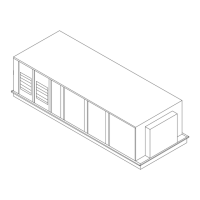
